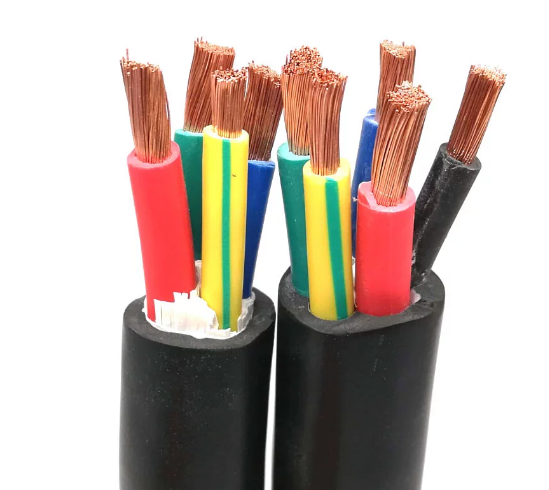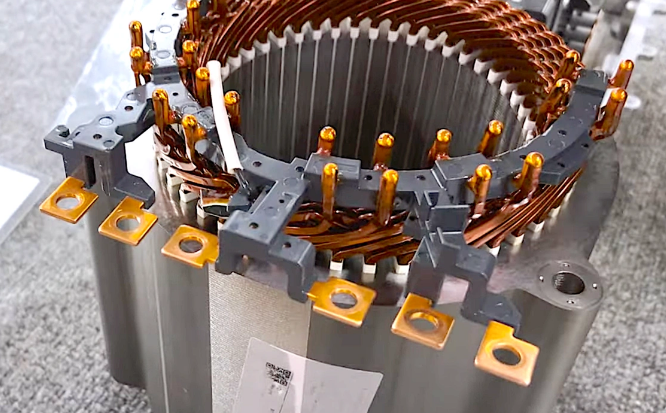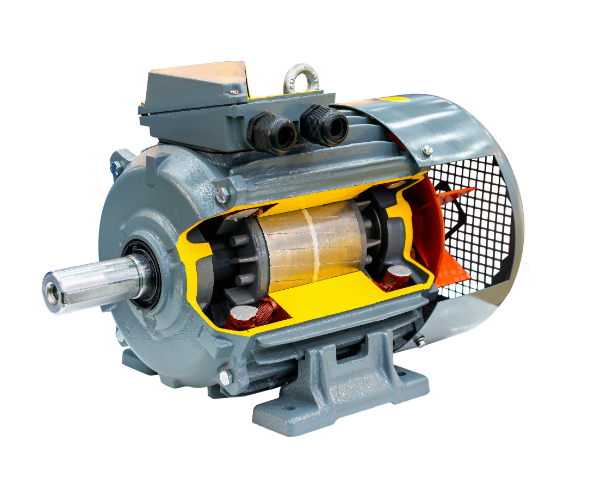The choice of a three-phase motor should consider the power of the equipment, working conditions, and nature of the load. Equipment below 10kW will be cheaper if fitted with a 380V asynchronous motor since its energy efficiency is higher than 90%, which means it can serve for up to ten years.
How to Choose the Voltage Level
The choice of the right voltage level will, to a great extent, define the efficiency of the entire project. Generally, small motors are set at 380V or 220V, while large industrial motors usually use 660V or higher. This depends on the power requirements of the equipment and the investment budget of the project. When the motor is less than 10kW, 380V can meet its operating requirements effectively and control costs. If the motor power exceeds 100kW, choosing a higher voltage level, such as 660V or above, is more reasonable. Higher voltage can lower current, reduce line loss, and improve equipment operating efficiency. Take a chemical plant’s conveyance pump system, for instance: in selecting a 600kW motor, a voltage grade of 660V resulted in an overall loss rate more than 15% lower than that at 380V, saving close to 200,000 yuan in electricity costs per year.
The motor’s operating environment is another key factor. In long-distance transmission motor systems, too low voltage may lead to serious cable loss. If the transmission distance is over 500 meters, choosing 10kV voltage instead of 380V can save nearly 30% of material costs. When purchasing a motor, it is not only essential to consider the parameters of the device itself but also to take actual operating conditions and wiring layout into account. If the project budget is limited, spending on standard voltage grades available in the market (such as 380V or 660V) will reduce additional costs associated with special motors and distribution systems. For example, a medium-sized manufacturing enterprise selected 380V motors and corresponding equipment, resulting in a total procurement cost 25% lower than using non-standard voltage equipment.

How to Match the Motor Type to the Equipment
In selecting the motor type, it is crucial to specify the exact requirements of the equipment accurately. If highly precise control is required, consider a servo motor. The positioning accuracy of a servo motor can generally reach 0.01 degrees, whereas the error range of an ordinary asynchronous motor is about 1 degree. This difference significantly impacts scenarios requiring fine control. For example, CNC machine tool spindles often use servo motors to achieve machining accuracy as precise as ±0.02mm. For applications that require long-term stable operation, such as large fans or pumps, a permanent magnet synchronous motor is more appropriate. Compared with ordinary asynchronous motors, permanent magnet synchronous motors are typically 10% to 15% more efficient and have a longer lifespan. After one steel plant replaced ordinary motors with permanent magnet synchronous ones, it managed to save up to 500,000 yuan in electricity bills annually, while the average equipment failure rate was reduced by more than 30%.
For applications with fluctuating loads, such as lifting equipment, a doubly-fed motor is better suited to handle changing working conditions. Doubly-fed motors can quickly adjust speed during load changes, lowering energy consumption and maintaining system stability. After a port applied doubly-fed motors to its cranes, the start-stop time was reduced by 20%, and overall efficiency improved by 15%. If the equipment budget is limited and the performance requirements for the motor are not high, a standard three-phase asynchronous motor remains the most economical choice. The structure of a three-phase asynchronous motor is simple, and maintenance costs are low. A 5kW motor typically costs around 3,000 yuan, making it suitable for most general conditions. This type of motor is commonly used for production line equipment in small-to-medium-sized manufacturing enterprises to meet production needs and effectively control costs. Environmental factors must also be considered. In hazardous environments, explosion-proof motors are required. Explosion-proof motors prevent electric sparks in flammable environments through special structures and materials. The petrochemical industry often selects explosion-proof motors with a rating of Exd II BT4, as they can operate safely in environments from -20℃ to +40℃, with annual maintenance costs of less than 500 yuan per motor.
Ensuring Optimal Motor Cooling
Cooling is crucial for maintaining the normal operation of a three-phase motor. When operating under high load, the motor’s surface temperature can reach or exceed 80℃, which not only reduces the motor’s efficiency but also shortens its lifespan and increases the risk of equipment failure. To avoid these issues, selecting the appropriate cooling method is critical. For motors below 100kW, air cooling is typically used, as it is efficient and cost-effective. For example, an air-cooled motor rated at 50kW can achieve a surface temperature reduction of about 15℃ per hour, which helps extend the equipment’s lifespan by at least 20%. For motors above 100kW, a water-cooling system may be considered. Water cooling can maintain the motor’s surface temperature below 50℃, effectively reducing heat loss and increasing overall equipment efficiency by at least 10%.
The motor’s cooling performance is closely related to the installation environment. A closed or poorly ventilated environment will hinder motor cooling, causing internal temperatures to rise. For instance, an automotive manufacturing plant once experienced a production line shutdown due to poor motor cooling. Upon inspection, it was found that the workshop’s ventilation system was suboptimal, causing the motor’s surface temperature to be 20℃ higher than its normal operating temperature and increasing the equipment failure rate by 30%. After upgrading the ventilation system, the motor’s operating temperature quickly returned to normal, and the equipment failure rate dropped by 25%. The installation position and method of the motor also have a significant impact on cooling performance. Motors should be installed at least 30 centimeters above the ground to avoid dust and debris from blocking cooling holes. After a food processing plant improved its motor installation position, motor temperature dropped by 10℃, saving nearly 20% in maintenance costs. Adding heat sinks or cooling ducts outside the motor can also effectively enhance cooling efficiency. Experiments have shown that installing aluminum heat sinks on the motor surface increased cooling efficiency by about 15% and extended the equipment’s lifespan by 2-3 years.








